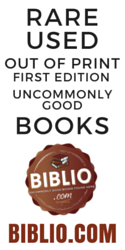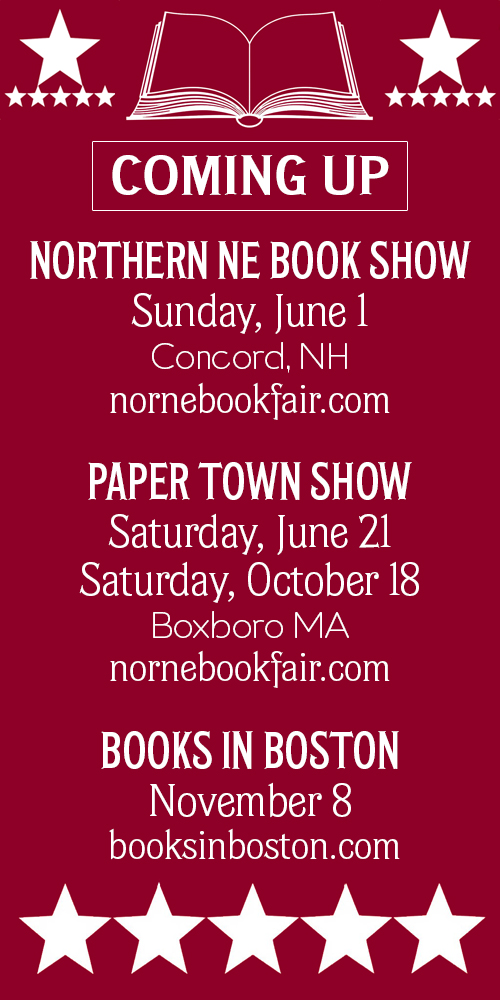Some Bookstores from the Past
The first time I ventured into an antiquarian bookstore I was about 17 years old. I’d heard about such places from reading Morley’s The Haunted Bookshop & Parnassus on Wheels—bonus selections from the Book-of-the-Month club that my parents belonged to while I was growing up in Gloversville (NY), a town of less than 25,000 people with two book & stationery stores—an out-dated business model that disappeared along with buggy whip making, bespoke umbrella shops, and the like. (I’m sure we’ll get an earful from the buggy whip and bespoke umbrella people, as well as any surviving book & stationery stores)
Both Cowles & Brown and Alvords & Smith did their best to offer a decent selection of new books (usually best sellers, juvenile series and common reference books), but mostly it was the stationery and related items that kept them going. As it was, I combed their shelves and devoured the juvenile series books, as any nine or ten year old would—the Hardy Boys were a staple, but Albert Payson Terhune’s books about his collies were my favorites. There were a few others of course, but none that made any lasting impression. As the years went on there were fewer books and finally they disappeared—the proprietors were sorry to see them go and said it all had something to do with television. Maybe it did. Who knows? So much for bookstores in Gloversville, NY.
At the end of sophomore year my parents decided I should transfer to a private school in Windsor (CT), a few miles north of Hartford. On Wednesday afternoons and after Saturday morning classes, boarding students who weren’t involved in a team sport could walk to town or take the bus to Hartford. It was on one of those Saturday bus trips, when the wrestling team wasn’t on the road or competing at home, that I discovered Witkower’s Bookstore at 77 Asylum Street.
(About that time Loomis had provided some grist for a Time magazine sports story about the unusual methods of our coach, whose pre-match relaxation technique for his New England championship wrestling team included having us all sit around on the mat in the warm-up room while he read aloud from the works of A.A. Milne. This is how I first learned about The House at Pooh Corner and of the adventures of Christopher Robin and Winnie-the-Pooh. For most of my team-mates it was a magical mystery tour to the days of their childhood—for me it was “what’s all this business about a talking stuffed toy bear and exactly how is it supposed to help us beat the other team”? As I said, When We Were Very Young the Gloversville book & stationery stores didn’t have a lot in the way of books.)
The premises at 77 Asylum Street had been a bookstore since 1835 and during the 1880s, while under the proprietorship of Brown & Gross, sold books to Mark Twain who was practically a neighbor for many years. (A partial list is on the Compedit.com website in Alan Gribben’s piece entitled The Formation of Samuel L. Clemen’s Library). Israel Witkower (1889-1868), an immigrant from Vienna, took over the business in 1928 and ran it until 1960 or thereabouts.
I don’t remember much about the main floor of Witkower’s, but eventually found my way to the second-hand book department in the basement. My lingering impressions remain of closely arranged shelving packed with thousands of books and occasional dangling light bulbs hanging from the ceiling. My recollection of the lighting situation may only be my imagination influenced by the conflated image of many of the secondhand bookshops I’ve been in over the years. What I do remember clearly is that it was the first time I spent money on an old book. The words “antiquarian” and “rare” had yet to enter my working vocabulary.
On one of the shelves at about eye-level, I found a large book with an impressive title: “The Philosophical Basis of Theism”. (The book has long since disappeared from my own library but several copies are currently offered on Biblio.com—mostly in the $40.00 to $60.00 range). The author was Samuel Harris and the full-blown title is “The Philosophical Basis of Theism. An examination of the personality of man to ascertain his capacity to know and serve God, and the validity of the principles underlying the defence of Theism...” Staying awake while reading the title seems a bit of a challenge now—in my old dorm room I always fell asleep part way through chapter one (or was it the Introduction?). Never made it to chapter two. I’m sure I missed out on some serious extra spending money by not renting it out to student or faculty insomniacs as a non-pharmaceutical sleeping aid.
To a naïve and inexperienced seventeen year old, the very title suggested that all the mysteries of the cosmos could somehow be summarized and explained in the pages of a single book. There are still a lot of one-book people in the world who have the answer for everything—and their numbers appear to be growing. Not a good sign. At any rate, the title implied that Harris could do for philosophy and religion what Herbert Spencer tried to do in his synthetic approach to knowledge of the physical world. (Boys and girls, for the essay portion of your final exam I want you to describe the universe and give three examples, and if you have any time left I’d like you to compare and contrast Kafka’s father with Whistler’s mother).
So why did I buy it?—well, it cost only 75 cents, held a lot of promise, and seemed such a bargain at the time. Nowadays when I think of all the good material I must have left behind, I sometimes imagine what it would be like to hitch a ride on the Tardis, and head straight back to 77 Asylum Street with a few thousand dollars burning a hole in my pocket.
Paul Minet to attend Cooperstown Antiquarian Book Fair
Paul Minet (See “Letter from England”) will be autographing copies of his memoir, Late Booking, at this year’s Cooperstown Antiquarian Book Fair on Saturday, June 27th, in Cooperstown, NY. Mr. Minet’s travel plans had not been worked out in time for us to make an announcement in our May/June issue or for the Cooperstown people to update their advertising, all of which accounts for this rather last minute notification.
The issue you are now reading was mailed first class on June 22nd, so subscribers within a reasonable driving distance of Cooperstown still have time to make plans to attend the fair and meet Paul.
Our own stock of Late Booking is sold out, but Mr. Minet has arranged for a small shipment to be delivered directly to the fair. Cooperstown in late June is a delightful destination for day trippers and the book fair should offer a pleasant setting for his first book signing in North America.
Paul and Sheila will be spending most of the week in Cazenovia and a small party and reception in their honor will be held there the evening of the book fair.


























